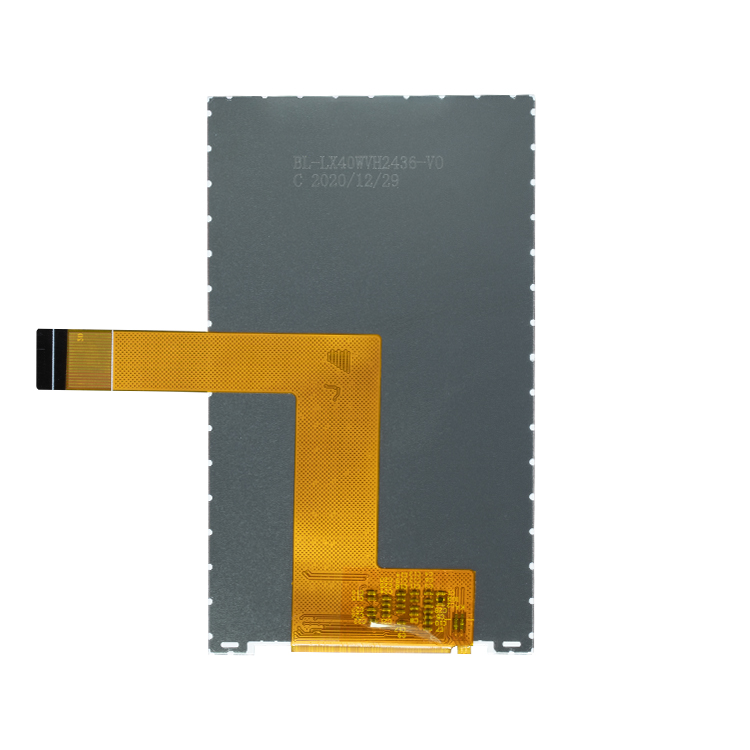The MCU interface standard name is I80, which is mainly used in the field of single-chip microcomputers.
The standard term for the MCU-LCD interface is the 8080 bus standard proposed by Intel.
The MCU interface can be mainly divided into 8080 mode and 6800 mode. The main difference between the two is the timing: data bit transmission has 8 bits, 9 bits, 16 bits, 18 bits, 24 bits; the connection is divided into: CS/ , RS (register selection), RD/, WR/, the rest is the transmission data line.
| ILI9806 | 1.Support resolution: WVGA 2.Can be used with panel technology: a-Si 3.I/F:MIPI-DBI/MIPI-DPI/MIPI-DSI/SPI 16bits 4.RAM or RAMLESS: 1/2 RAM 5.Basic input/output voltage: IOVCC=1.65~3.3V; VCI=2.6~3.3V 6.Status:MP |
| ILI9806H | 1.Support resolution: WVGA 2.Can be used with panel technology: a-Si 3.I/F:MIPI-DBI/MIPI-DPI/MIPI-DSI/SPI 16bits 4.RAM or RAMLESS: 1/2 RAM 5.Basic input/output voltage: IOVCC=1.65~3.3V; VCI=2.6~3.3V 6.Status:MP |
Advantages: The control is simple and convenient, without clock and synchronization signals.
Disadvantages: It takes up a lot of GRAM resources, the display refresh rate is insufficient, and the resolution above 480×800 cannot be achieved.
If there is demand in the market, there is a solution. Taiwanese manufacturers of display driver ICs, such as Novatek NT35510 and ILI9806, can support FULL RAM or 1/2 RAM to make up for GRAM resources. 480X800 resolution displays can support MCU The interface also has a flip display.
For LCD with MCU interface, its internal chip is called LCD driver IC. The main function is to transform the data/commands sent by the main board into RGB data of each pixel and display them on the screen. This process does not require dot, line, or frame clocks.
The LCD Driver IC of the MCU interface has GRAM, and the Driver IC is a coprocessor of the MCU, which accepts the Command/Data sent by the MCU and can work relatively independently. For LCD with MCU interface, its internal chip is called LCD driver IC. The main function is to convert the data/command sent by the main board into RGB data of each pixel, so that it can be displayed on the LCD screen on the screen. This process does not require dot, line, or frame clocks.
I(intel)8080 mode
There are 5 control pins of I80 mode pins: CS, RS, /WR, /RD RESET
Advantages: The control is simple and convenient, without clock and synchronization signals.
Disadvantage: It consumes GRAM resources and cannot achieve a resolution above 480×800.
Novatek NT35510 Sunplus OTM8009A Wonderland HX8363B Yili ILI9806 and above models can be perfectly solved.
M(Motorola)6800 mode
M6800 mode supports selectable bus width 8/9/16/18-bit (default is 8-bit). One pin (/WR), and a latch signal (E) is added for data bit transmission with 8 bits, 9 bits, 16 bits and 18 bits.
The main difference between MCU interface and RGB interface is:
MCU interface mode: the display data is written into DDRAM, which is often used for static picture display.
RGB interface mode: the display data is not written into DDRAM, it can be directly displayed on the display, and the speed is fast. It is often used to display video or animation.
The MCU interface does not support 480X800 resolution LCD screens. Display driver IC manufacturers, such as Novatek NT35510 and Yili ILI9806, can support FULL RAM or 1/2 RAM to make up for GRAM resources. 480X800 resolution screens can do it Support MCU interface and flip display.
